The Voyager spacecraft are on a
long journey out of our solar system into interstellar space. Despite
their great distance from Earth, we are still able to communicate with
the spacecraft on a regular basis. This article looks at the basic
communication infrastructure that allows us to communicate with the
spacecraft.
The Deep Space Network
After the Voyager spacecraft left Earth and completed their grand tour of the solar system, they began their journey into the regions of space that are beyond the influence of our sun—answering questions about what lies in the great cosmic void between stars.Thirty-eight hours ago, a 20 kW signal was transmitted from Earth towards the Voyager 1 spacecraft. Nineteen hours ago, the signal was received by Voyager 1 and returned by a 20 Watt transponder. And, as I write this article, a station in Madrid, Spain is receiving that return signal at a power level of
(-160.48 dBm.) For reference, a very good FM radio receiver can pick up signals at
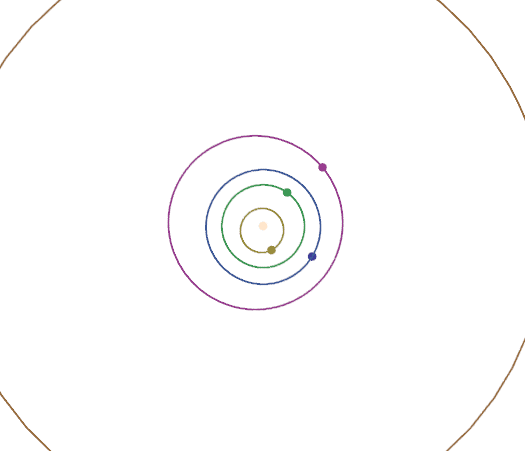
Accelerating Image showing the path of the Voyager spacecraft and the planets during its mission. Credit: Mark Hughes
The Deep Space Network consists of three antenna complexes that are stationed around the globe approximately 120-longitudinal degrees apart. The global separation of stations allows most spacecraft to have an uninterrupted line-of-sight with at least one station regardless of the time of day. A listening station will rise before the last visible one sets. Voyager 1 is still visible from all three stations, but Voyager 2 is only visible from the Canberra, Australia site.
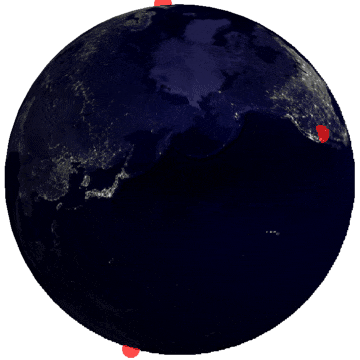
This spinning globe has red dots that represent Deep Space Network stations in: Canberra, Australia; Goldstone, California, United States; and Madrid, Spain. Credit: Mark Hughes
Watch which spacecraft the Deep Space Network antennas are communicating with below.
Visit the full website: https://eyes.nasa.gov/dsn/dsn.html
As the spacecraft travel further from Earth, the signal strength decreases due to free space path loss. Data rates typically fall as a consequence. Improvements in the Deep Space Network receiver sensitivity over the past 40 years have mitigated reductions in data rate.
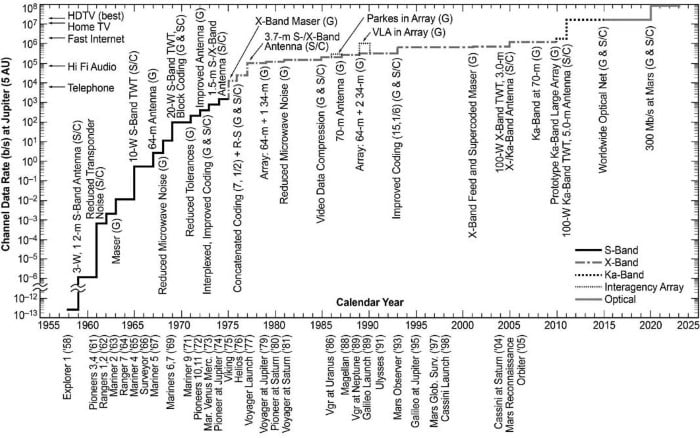
Deep space network capabilities. Image credit: NASA.gov
Due to the incredible weakness of the spacecraft's downlink by the time it reaches Earth, large parabolic reflectors, and hyperbolic sub-reflectors collect the microwave radiation and focus it on a cryogenically cooled receiver at the base of the antenna.
Image of a microwave antenna from NASA.gov. Click here for a larger detailed image of the antenna.
Each Deep Space Network location has multiple 34-meter antennas and a single 70-meter antenna. While any one of the antennas is more than powerful enough to transmit to Voyager, a single 34-meter antenna does not collect enough electromagnetic radiation to detect Voyagers downlink. Antennas at each site can be linked to simultaneously receive the signal from the spacecraft, providing increased gain through radio interferometry.

Voyager 2 antenna tracking schedule for Canberra, Australia (click for larger) shows the large 70-meter antenna on the top row and the 34-meter antennas in the bottom three rows. Multiple antennas can be linked to increase gain. Credit: Mark Hughes
Accurately locating the spacecraft on its journey was accomplished with Doppler rangefinding, and later with Very Long Baseline Interferometry (VLBI) along two baselines that extend from Goldstone, California to Madrid, Spain, and from Goldstone, California to Canberra, Australia.
The Goldstone-Madrid baseline is used to determine right-ascension of a spacecraft and the Goldstone-Canberra baseline provides a mix between right-ascension and declination. When combined, the data can locate the spacecraft extremely accurately in the celestial sphere with angular measurement error measured in nano-radians (one nano-radian of error at 1 million kilometers is 100 cm).
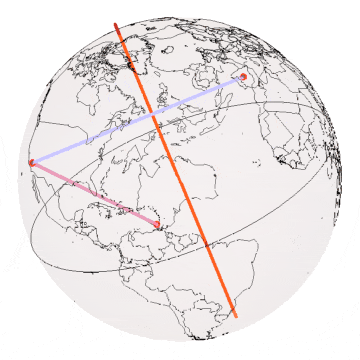
Interferometer baselines from Goldstone to Madrid (Blue), and baseline from Goldstone to Canberra (Red). Credit: Mark Hughes
Technical Details
The following technical details of Voyager communication are provided in Deep Space Communication and Navigation Series (Chapter 3), and JPL DESCANSO Volume 4—Voyager Telecommunications.Each Deep Space Network site has a highly accurate frequency source that can be tuned to compensate for the Doppler frequency shift caused by relative movement between the transmitting and receiving antennas. Compensation takes into account the movement of the spacecraft, the rotation of the Earth around the sun, and the revolution of the Earth around its axis. Receivers are able to detect frequency shifts that are a fraction of a hertz.
The uplink carrier frequency of Voyager 1 is 2114.676697 MHz and 2113.312500 MHz for Voyager 2. The uplink carrier can be modulated with command and/or ranging data. Commands are 16-bps, Manchester-encoded, biphase-modulated onto a 512 HZ square wave subcarrier.

Manchester encoding (X0R) illustrated with a blue clock signal, orange data signal, and green result. Credit: Mark Hughes
Voyager's receivers phase lock to the uplink carrier to provide a two-way coherent downlink carrier signal or can use an internal frequency source to produce a non-coherent downlink carrier. The spacecraft can return information to Earth with X-band or S-band transmitters
| Spacecraft | Coherent Downlink Frequency (MHz) | Non-Coherent Downlink Frequency (MHz) |
|---|---|---|
| Voyager 1 | 2296.481481 | 2295.000000 |
| 8420.432097 | 8415.000000 | |
| Voyager 2 | 2295.000000 | 2296.481481 |
| 8415.000000 | 8420.432097 |
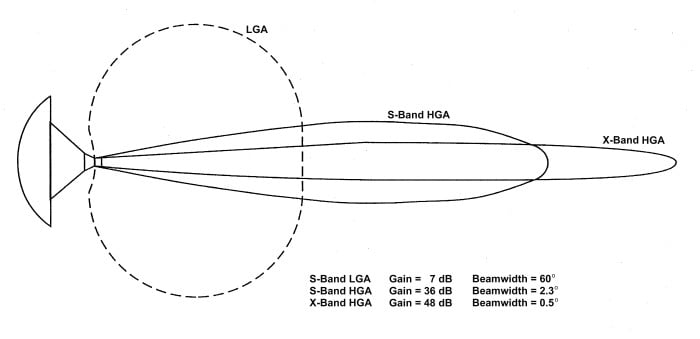
Image of Voyager beam patterns from DESCANSO—Spacecraft Telecom System Design (PDF)
Conclusion
The Voyager spacecraft will continue their journey for unknown millennia, but we will only be able to communicate with them for another eight years—by that time, the Radionucleotide Thermoelectric Generators will have depleted to the point that they can no longer power Voyager's remaining scientific instruments and transmitters. The spacecraft will fall silent.Scientists at the Deep Space Network will track the downlink signal from the spacecraft as it sputters into silence and becomes part of the background noise of the solar system—never to be heard from by humans again.
Additional resources and references used to write this article can be found at:








No comments:
Post a Comment